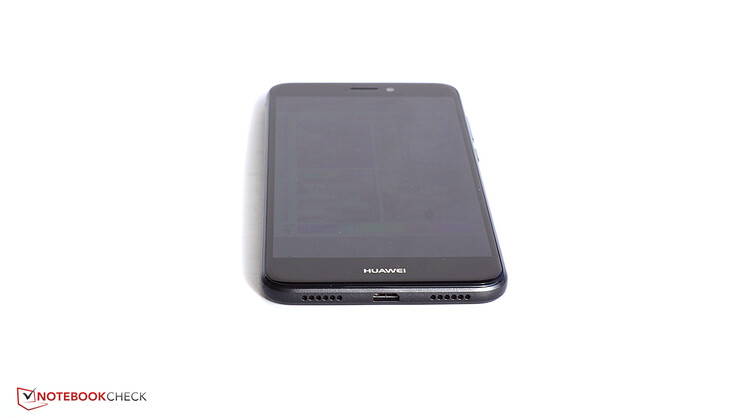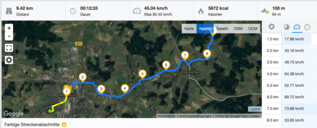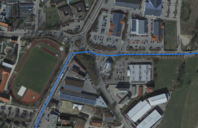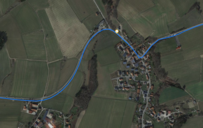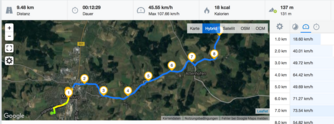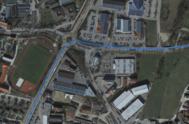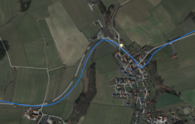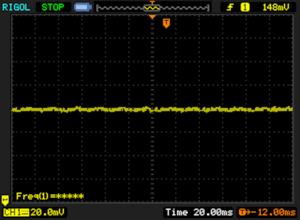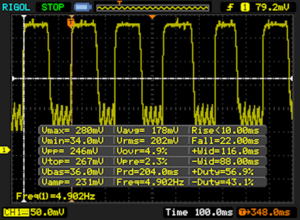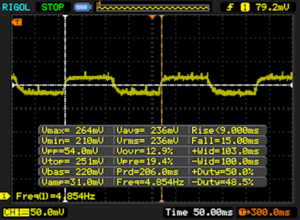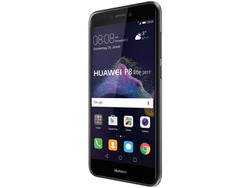华为 P8 Lite 2017 智能手机简短评测
» Notebookcheck多媒体笔记本电脑Top 10排名
» Notebookcheck游戏笔记本电脑Top 10排名
» Notebookcheck低价办公/商务笔记本电脑Top 10排名
» Notebookcheck高端办公/商务笔记本电脑Top 10排名
» Notebookcheck工作站笔记本电脑Top 10排名
» Notebookcheck亚笔记本电脑Top 10排名
» Notebookcheck超级本产品Top 10排名
» Notebookcheck变形本产品Top 10排名
» Notebookcheck平板电脑Top 10排名
» Notebookcheck智能手机Top 10排名
» Notebookcheck评测过最出色的笔记本电脑屏幕
» Notebookcheck售价500欧元以下笔记本电脑Top 10排名
» Notebookcheck售价300欧元以下笔记本电脑Top 10排名
Size Comparison
| Networking | |
| iperf3 transmit AX12 | |
| Lenovo ZUK Z2 | |
| HTC One A9s | |
| Huawei P8 lite 2017 | |
| Asus Zenfone 3 Max ZC520TL | |
| iperf3 receive AX12 | |
| Lenovo ZUK Z2 | |
| HTC One A9s | |
| Huawei P8 lite 2017 | |
| Asus Zenfone 3 Max ZC520TL | |
| |||||||||||||||||||||||||
Brightness Distribution: 91 %
Center on Battery: 575 cd/m²
Contrast: 1474:1 (Black: 0.39 cd/m²)
ΔE Color 5.2 | 0.5-29.43 Ø5
ΔE Greyscale 7.2 | 0.57-98 Ø5.3
93.7% sRGB (Calman 2D)
Gamma: 2.4
| Huawei P8 lite 2017 IPS, 1920x1080, 5.20 | Huawei P8 lite IPS, 1280x720, 5.00 | Asus Zenfone 3 Max ZC520TL IPS, 1280x720, 5.20 | HTC One A9s IPS, 1280x720, 5.00 | Lenovo ZUK Z2 IPS, 1920x1080, 5.00 | |
|---|---|---|---|---|---|
| Screen | -15% | -4% | 9% | -5% | |
| Brightness middle | 575 | 365 -37% | 507 -12% | 348 -39% | 512 -11% |
| Brightness | 559 | 353 -37% | 474 -15% | 320 -43% | 502 -10% |
| Brightness Distribution | 91 | 93 2% | 85 -7% | 85 -7% | 84 -8% |
| Black Level * | 0.39 | 0.42 -8% | 0.53 -36% | 0.23 41% | 0.58 -49% |
| Contrast | 1474 | 869 -41% | 957 -35% | 1513 3% | 883 -40% |
| Colorchecker dE 2000 * | 5.2 | 5.2 -0% | 4.7 10% | 3.5 33% | 3.8 27% |
| Colorchecker dE 2000 max. * | 10.3 | 7.2 30% | 6.4 38% | 11.2 -9% | |
| Greyscale dE 2000 * | 7.2 | 5.85 19% | 4.8 33% | 4 44% | 2.7 62% |
| Gamma | 2.4 92% | 2.17 101% | 2.25 98% | 2.3 96% | 2.09 105% |
| CCT | 7224 90% | 7252 90% | 6441 101% | 6527 100% | 6076 107% |
| Color Space (Percent of AdobeRGB 1998) | 70.86 | ||||
| Color Space (Percent of sRGB) | 91.25 |
* ... smaller is better
Screen Flickering / PWM (Pulse-Width Modulation)
| Screen flickering / PWM not detected | |||
In comparison: 53 % of all tested devices do not use PWM to dim the display. If PWM was detected, an average of 17915 (minimum: 5 - maximum: 3846000) Hz was measured. | |||
Display Response Times
| ↔ Response Time Black to White | ||
|---|---|---|
| 32 ms ... rise ↗ and fall ↘ combined | ↗ 10 ms rise | |
| ↘ 22 ms fall | ||
| The screen shows slow response rates in our tests and will be unsatisfactory for gamers. In comparison, all tested devices range from 0.1 (minimum) to 240 (maximum) ms. » 84 % of all devices are better. This means that the measured response time is worse than the average of all tested devices (21.5 ms). | ||
| ↔ Response Time 50% Grey to 80% Grey | ||
| 24 ms ... rise ↗ and fall ↘ combined | ↗ 9 ms rise | |
| ↘ 15 ms fall | ||
| The screen shows good response rates in our tests, but may be too slow for competitive gamers. In comparison, all tested devices range from 0.2 (minimum) to 636 (maximum) ms. » 29 % of all devices are better. This means that the measured response time is better than the average of all tested devices (33.7 ms). | ||
| AnTuTu v6 - Total Score (sort by value) | |
| Huawei P8 lite 2017 | |
| Asus Zenfone 3 Max ZC520TL | |
| HTC One A9s | |
| Lenovo ZUK Z2 | |
| Geekbench 4.0 | |
| 64 Bit Single-Core Score (sort by value) | |
| Huawei P8 lite 2017 | |
| Asus Zenfone 3 Max ZC520TL | |
| HTC One A9s | |
| 64 Bit Multi-Core Score (sort by value) | |
| Huawei P8 lite 2017 | |
| Asus Zenfone 3 Max ZC520TL | |
| HTC One A9s | |
| GFXBench (DX / GLBenchmark) 2.7 | |
| T-Rex Onscreen (sort by value) | |
| Huawei P8 lite 2017 | |
| Huawei P8 lite | |
| Asus Zenfone 3 Max ZC520TL | |
| HTC One A9s | |
| Lenovo ZUK Z2 | |
| 1920x1080 T-Rex Offscreen (sort by value) | |
| Huawei P8 lite 2017 | |
| Huawei P8 lite | |
| Asus Zenfone 3 Max ZC520TL | |
| HTC One A9s | |
| Lenovo ZUK Z2 | |
| GFXBench 3.0 | |
| on screen Manhattan Onscreen OGL (sort by value) | |
| Huawei P8 lite 2017 | |
| Asus Zenfone 3 Max ZC520TL | |
| HTC One A9s | |
| Lenovo ZUK Z2 | |
| 1920x1080 1080p Manhattan Offscreen (sort by value) | |
| Huawei P8 lite 2017 | |
| Asus Zenfone 3 Max ZC520TL | |
| HTC One A9s | |
| Lenovo ZUK Z2 | |
| GFXBench 3.1 | |
| on screen Manhattan ES 3.1 Onscreen (sort by value) | |
| Huawei P8 lite 2017 | |
| Asus Zenfone 3 Max ZC520TL | |
| HTC One A9s | |
| Lenovo ZUK Z2 | |
| 1920x1080 Manhattan ES 3.1 Offscreen (sort by value) | |
| Huawei P8 lite 2017 | |
| Asus Zenfone 3 Max ZC520TL | |
| HTC One A9s | |
| Lenovo ZUK Z2 | |
| PCMark for Android - Work performance score (sort by value) | |
| Huawei P8 lite 2017 | |
| Huawei P8 lite | |
| Asus Zenfone 3 Max ZC520TL | |
| HTC One A9s | |
| Lenovo ZUK Z2 | |
| Mozilla Kraken 1.1 - Total (sort by value) | |
| Huawei P8 lite 2017 | |
| Huawei P8 lite | |
| Asus Zenfone 3 Max ZC520TL | |
| HTC One A9s | |
| Lenovo ZUK Z2 | |
| Octane V2 - Total Score (sort by value) | |
| Huawei P8 lite 2017 | |
| Huawei P8 lite | |
| Asus Zenfone 3 Max ZC520TL | |
| HTC One A9s | |
| Lenovo ZUK Z2 | |
| WebXPRT 2015 - Overall (sort by value) | |
| Huawei P8 lite 2017 | |
| Huawei P8 lite | |
| Asus Zenfone 3 Max ZC520TL | |
| HTC One A9s | |
| JetStream 1.1 - Total Score (sort by value) | |
| Huawei P8 lite 2017 | |
| Asus Zenfone 3 Max ZC520TL | |
| HTC One A9s | |
| Lenovo ZUK Z2 | |
* ... smaller is better
| AndroBench 3-5 | |
| Sequential Read 256KB (sort by value) | |
| Huawei P8 lite 2017 | |
| Huawei P8 lite | |
| Asus Zenfone 3 Max ZC520TL | |
| HTC One A9s | |
| Lenovo ZUK Z2 | |
| Sequential Write 256KB (sort by value) | |
| Huawei P8 lite 2017 | |
| Huawei P8 lite | |
| Asus Zenfone 3 Max ZC520TL | |
| HTC One A9s | |
| Lenovo ZUK Z2 | |
| Random Read 4KB (sort by value) | |
| Huawei P8 lite 2017 | |
| Huawei P8 lite | |
| Asus Zenfone 3 Max ZC520TL | |
| HTC One A9s | |
| Lenovo ZUK Z2 | |
| Random Write 4KB (sort by value) | |
| Huawei P8 lite 2017 | |
| Huawei P8 lite | |
| Asus Zenfone 3 Max ZC520TL | |
| HTC One A9s | |
| Lenovo ZUK Z2 | |
| Sequential Read 256KB SDCard (sort by value) | |
| Huawei P8 lite 2017 | |
| Asus Zenfone 3 Max ZC520TL | |
| HTC One A9s | |
| Sequential Write 256KB SDCard (sort by value) | |
| Huawei P8 lite 2017 | |
| Asus Zenfone 3 Max ZC520TL | |
| HTC One A9s | |
| Asphalt 8: Airborne | |||
| Settings | Value | ||
| high | 25 fps | ||
| very low | 30 fps | ||
| Dead Trigger 2 | |||
| Settings | Value | ||
| high | 29 fps | ||
(+) The maximum temperature on the upper side is 33 °C / 91 F, compared to the average of 35 °C / 95 F, ranging from 21.9 to 56 °C for the class Smartphone.
(+) The bottom heats up to a maximum of 31.9 °C / 89 F, compared to the average of 33.8 °C / 93 F
(+) In idle usage, the average temperature for the upper side is 29.5 °C / 85 F, compared to the device average of 32.7 °C / 91 F.
Huawei P8 lite 2017 audio analysis
(+) | speakers can play relatively loud (83.6 dB)
Bass 100 - 315 Hz
(-) | nearly no bass - on average 32.1% lower than median
(±) | linearity of bass is average (11.2% delta to prev. frequency)
Mids 400 - 2000 Hz
(+) | balanced mids - only 4% away from median
(+) | mids are linear (6.4% delta to prev. frequency)
Highs 2 - 16 kHz
(±) | higher highs - on average 7.9% higher than median
(+) | highs are linear (4.8% delta to prev. frequency)
Overall 100 - 16.000 Hz
(±) | linearity of overall sound is average (27.6% difference to median)
Compared to same class
» 67% of all tested devices in this class were better, 5% similar, 27% worse
» The best had a delta of 12%, average was 38%, worst was 134%
Compared to all devices tested
» 81% of all tested devices were better, 4% similar, 15% worse
» The best had a delta of 4%, average was 25%, worst was 134%
Asus Zenfone 3 Max ZC520TL audio analysis
(+) | speakers can play relatively loud (88 dB)
Bass 100 - 315 Hz
(-) | nearly no bass - on average 37.7% lower than median
(±) | linearity of bass is average (9.6% delta to prev. frequency)
Mids 400 - 2000 Hz
(±) | reduced mids - on average 9.7% lower than median
(±) | linearity of mids is average (9.4% delta to prev. frequency)
Highs 2 - 16 kHz
(±) | higher highs - on average 7.6% higher than median
(+) | highs are linear (3.3% delta to prev. frequency)
Overall 100 - 16.000 Hz
(-) | overall sound is not linear (30.7% difference to median)
Compared to same class
» 76% of all tested devices in this class were better, 4% similar, 20% worse
» The best had a delta of 12%, average was 38%, worst was 134%
Compared to all devices tested
» 87% of all tested devices were better, 3% similar, 10% worse
» The best had a delta of 4%, average was 25%, worst was 134%
| Off / Standby | |
| Idle | |
| Load |
|
| Huawei P8 lite 2017 3000 mAh | Huawei P8 lite mAh | Asus Zenfone 3 Max ZC520TL 4100 mAh | HTC One A9s 2300 mAh | Lenovo ZUK Z2 3500 mAh | |
|---|---|---|---|---|---|
| Power Consumption | 6% | 11% | 7% | 4% | |
| Idle Minimum * | 1.44 | 1.4 3% | 0.74 49% | 1.29 10% | 1.31 9% |
| Idle Average * | 2.47 | 2.3 7% | 2.04 17% | 2.28 8% | 2.03 18% |
| Idle Maximum * | 2.58 | 2.5 3% | 2.22 14% | 2.52 2% | 2.08 19% |
| Load Average * | 4.55 | 3.9 14% | 5.57 -22% | 4.06 11% | 5.45 -20% |
| Load Maximum * | 6.3 | 6 5% | 6.59 -5% | 5.91 6% | 6.75 -7% |
* ... smaller is better
| Huawei P8 lite 2017 3000 mAh | Huawei P8 lite mAh | Asus Zenfone 3 Max ZC520TL 4100 mAh | HTC One A9s 2300 mAh | Lenovo ZUK Z2 3500 mAh | |
|---|---|---|---|---|---|
| Battery Runtime | -41% | 21% | -5% | -10% | |
| Reader / Idle | 1326 | 715 -46% | 1462 10% | 1543 16% | |
| H.264 | 644 | 369 -43% | 845 31% | 587 -9% | |
| WiFi v1.3 | 604 | 351 -42% | 814 35% | 517 -14% | 546 -10% |
| Load | 283 | 194 -31% | 301 6% | 245 -13% |
Pros
Cons
决定创造前旗舰手机的精简版本是不寻常的行为。该制造商创造了一个不仅仅只是能与中档智能手机竞争的华为P8精简版(2017年)。该机型超越其前身,在许多方面,华为 P8 lite甚至可以与一些行业中更昂贵的设备竞争。首先要提到的其极速而精准的指纹扫描模块,这点在250欧元(约264美元)的设备中很难被发现。屏幕具有比同类别产品更高的分辨率,并对电池续航没有太大的负面影响:实际使用中,两个工作日不充电是非常容易达成的。该手机的性能良好,几乎不会发烫。
通话质量略显平庸,扬声器几乎不可能说服一个真正的音乐迷。明亮且低对比度的屏幕有一个可见色块。充电过程需要很长的时间。倾斜的表面的外壳太滑,手机可能摔落在地。
华为成功推出了P8 lite(2017),作为中端智能手机的更新。采取这种不寻常的方法显得相当值得:它给予了原本几乎被遗忘的手机以更好的屏幕,良好的电池续航,和相当大的性能提升。
华为弥补了智能手机的缺点:增加了非常准确的GPS模块和体面的配置。因此,我们推荐购买华为的P8 Lite(2017)。
注:本文是基于完整评测的缩减版本,阅读完整的英文评测,请点击这里。
Huawei P8 lite 2017
-
02/13/2017 v6(old)
Florian Wimmer


 Deutsch
Deutsch English
English Español
Español Français
Français Italiano
Italiano Nederlands
Nederlands Polski
Polski Português
Português Русский
Русский Türkçe
Türkçe Svenska
Svenska Chinese
Chinese Magyar
Magyar